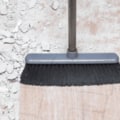Construction dust, a common byproduct of building and remodeling projects, can indeed pose significant health risks, making it a critical concern for both construction workers and residents near construction sites. This dust comprises a variety of particles, including silica, wood dust, and other fine materials, which can be inhaled and lead to various health issues. Silica, which is found in concrete, bricks, and mortar, can be particularly hazardous. When inhaled, the fine silica particles can cause a condition known as silicosis, a serious lung disease that can lead to severe breathing difficulties and is irreversible. Additionally, prolonged exposure to silica dust can increase the risk of lung cancer and other respiratory conditions.
Wood dust, another common component of construction dust, also carries risks. It can cause allergic reactions and irritant effects on the skin, eyes, and respiratory system. In some cases, exposure to certain types of wood dust has been linked to a higher risk of nasal cancer. The fine particulate nature of construction dust means it can easily become airborne and, once inhaled, can penetrate deep into the lungs, causing inflammation and exacerbating conditions like asthma and bronchitis.
Moreover, the presence of heavy metals and other chemical residues in construction dust can lead to further health complications. These substances can come from painted surfaces, pipes, and fixtures being demolished or renovated, and their particles can be toxic if ingested or inhaled over time. The risk is heightened in enclosed spaces where dust particles are not easily dispersed and can accumulate to high concentrations.
The implications for public health necessitate stringent measures to control and minimize exposure to construction dust. At construction sites, implementing wet dust suppression techniques or using vacuum dust collection systems can significantly reduce the amount of airborne dust. Workers should also wear appropriate personal protective equipment, such as masks and respirators, to protect themselves from inhaling hazardous dust. Beyond personal protective gear, regular health monitoring and training on the risks associated with dust exposure are essential for maintaining worker safety.
For those living near construction sites, minimizing dust exposure involves sealing windows and doors during heavy construction periods and using air purification systems to filter out fine particulate matter. Local regulations may also require construction companies to manage dust emissions effectively to protect nearby residents and the environment from the adverse effects of dust pollution.
Dealing with the aftermath of construction and ensuring proper cleanup and disposal of construction waste are crucial in mitigating the impact of construction dust. This involves not only sweeping and removing visible dust but also ensuring that finer particles are captured and removed safely. For efficient and responsible management of construction debris, services like TK Skip Hire (know more about them here) provide essential resources and expertise. They offer a variety of skips and waste management solutions that can handle everything from large pieces of debris to fine dust, ensuring that all materials are disposed of in a manner that minimizes environmental impact and health risks.
In summary, construction dust is not merely a nuisance but a serious health hazard that can cause a range of respiratory and other health issues. The risks associated with construction dust require comprehensive management strategies, both to protect those directly involved in construction and those in surrounding areas. Proper safety practices, coupled with effective waste management and regulatory compliance, are key to preventing the health risks associated with construction dust, ensuring that construction sites remain safe for everyone involved.



